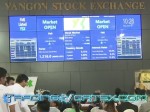Table Of Contents:
- Introduction – Understanding the Basics of Trading Orders:
- Stop Loss Orders Explained:
- Stop Limit Orders Explained:
- Key Differences Between Stop Loss and Stop Limit Orders:
- Factors to Consider When Choosing Between Stop Loss and Stop Limit Orders:
- Examples and Insights – Exploring Stop Loss and Stop Limit Orders:
- Best Practices for Using Stop Loss and Stop Limit Orders:
- Conclusion – Navigating the Trading Landscape with Confidence:
Introduction – Understanding the Basics of Trading Orders:
Hey there, fellow traders and investors! Have you ever found yourself in the midst of a trade, trying to navigate the choppy waters of the market, when suddenly you're faced with a crucial decision: should you set a stop loss or a stop limit order? It's a dilemma we've all encountered at some point in our trading journeys, and let me tell you, it can feel like walking a tightrope over a pit of uncertainty.
But fear not, because today we're diving headfirst into the world of trading orders to demystify one of the most common conundrums: the difference between stop loss and stop limit orders. Think of it as your trusty GPS through the maze of market volatility, helping you steer clear of potential pitfalls and chart a course towards trading success.
Now, I know what you're thinking: "Aren't they basically the same thing?" Ah, my friend, that's where the beauty of trading lies – in the nuances. While stop loss and stop limit orders may seem like two peas in a pod, they actually serve different purposes and come with their own set of pros and cons.
So buckle up and get ready to embark on this trading adventure with me. By the time we're done, you'll not only understand the difference between stop loss and stop limit orders but also be equipped with the knowledge to make informed decisions that can help safeguard your investments and maximize your profits. Let's dive in!
Stop Loss Orders Explained:
Alright, folks, let's kick things off by delving into the world of stop loss orders. Picture this: you've just entered a trade, feeling confident and ready to ride the wave of market momentum. But as any seasoned trader will tell you, the market is a wild beast, and sometimes things don't go according to plan. That's where stop loss orders swoop in to save the day.
Definition and Purpose of Stop Loss Orders:
The purpose of a stop loss order is simple yet crucial: risk management. By setting a predetermined price at which you're willing to cut your losses and bail out of a trade, you protect yourself from catastrophic losses in case the market doesn't go your way. It's all about preserving your capital and living to trade another day.
How Stop Loss Orders Work?
Now, let's talk mechanics. How exactly do stop loss orders work? Well, it's pretty straightforward. Once you've entered a trade, you simply specify a stop loss price – the price at which you want your broker to sell your position if things go south. This stop loss price acts as a safety threshold, preventing you from losing more than you're comfortable with.
When the market hits your stop loss price, your broker automatically executes a sell order, closing out your position and cutting your losses. It's like hitting the eject button on a rollercoaster ride that's taken a turn for the worse – fast, efficient, and sometimes a lifesaver.
Benefits and Drawbacks of Stop Loss Orders:
Now, let's weigh the pros and cons. On the plus side, stop loss orders offer peace of mind and protection against unforeseen market downturns. They allow you to set clear boundaries and stick to your risk management plan, which is essential for long-term trading success.
However, stop loss orders aren't without their drawbacks. One potential downside is the risk of premature exits. In volatile markets, prices can fluctuate wildly, triggering stop loss orders and prematurely closing out trades before they have a chance to rebound. It's like jumping ship at the first sign of trouble, potentially missing out on profitable opportunities.
So, there you have it – stop loss orders in a nutshell. They're your first line of defense in the battle against market volatility, offering protection and peace of mind in an uncertain world. But remember, like any tool in your trading arsenal, they're most effective when used wisely and in conjunction with a well-thought-out trading strategy. Stay tuned as we explore the ins and outs of stop limit orders next!
Stop Limit Orders Explained:
Welcome back, fellow traders! Now that we've covered stop loss orders, it's time to turn our attention to their cousin – stop limit orders. If stop loss orders are the safety net of trading, then stop limit orders are like setting up a fortress to protect your investments. Intrigued? Let's dive in and unravel the mysteries of stop limit orders.
Definition and Purpose of Stop Limit Orders:
Now, you might be wondering, why bother with a stop limit order when you could just use a stop loss or a limit order? Good question! The beauty of stop limit orders lies in their precision. They allow you to set both a trigger price and a price at which you're willing to buy or sell, giving you more control over your trades and potentially minimizing slippage.
How Stop Limit Orders Work?
Alright, let's break it down. When you place a stop limit order, you specify two key prices: the stop price and the limit price. The stop price acts as the trigger – once the market hits this price, your order is activated. However, unlike a stop loss order, which triggers a market order, a stop limit order triggers a limit order.
Here's where it gets interesting. Once your stop price is hit, your broker will only execute your order if it can be filled at your specified limit price or better. If the market is moving fast and your limit price can't be met, your order might not get filled – hence the term "limit."
Practical Example – How Stop Limit Orders Protect Your Profits?
Let's dive into a real-life example to illustrate how stop limit orders work in the market:
Imagine you're a trader who has been closely monitoring the stock of Company XYZ, which is currently trading at $100 per share. You believe that if the stock price reaches $110, it will likely continue to rise, but you also want to protect your profits in case the price suddenly drops.
To implement this strategy using a stop limit order, you set a stop price at $110 and a limit price at $112. Here's how it plays out:
- You place a stop limit order to sell 100 shares of Company XYZ with a stop price of $110 and a limit price of $112.
- The market is volatile, and the price of Company XYZ quickly climbs to $110.
- Once the stop price of $110 is triggered, your stop limit order becomes active.
- However, due to the rapid movement of the market, the stock price jumps to $115 before your order can be executed.
- Since your limit price of $112 can't be met in the current market conditions, your stop limit order remains unfilled.
- As a result, you continue to hold onto your shares of Company XYZ, allowing you to benefit from further price appreciation.
In this example, the stop limit order provided you with an added layer of control over your trade. By setting both a stop price and a limit price, you were able to protect your profits while still allowing for potential upside if the stock price continued to rise.
However, it's important to note that stop limit orders are not foolproof and may not always guarantee execution, especially in fast-moving markets. Traders should carefully consider market conditions and adjust their order parameters accordingly to mitigate the risk of missed opportunities or unfavorable outcomes.
Advantages and Disadvantages of Stop Limit Orders:
Now, let's talk pros and cons. One major advantage of stop limit orders is their precision. By setting both a stop price and a limit price, you have more control over your entry and exit points, potentially reducing slippage and improving your overall trade execution.
However, stop limit orders also come with their own set of challenges. One potential drawback is the risk of not getting filled if the market moves quickly. If the price shoots past your limit price before your order can be executed, you might miss out on an opportunity or be left holding the bag.
So, there you have it – stop limit orders demystified. They're like the Swiss Army knife of trading, offering precision and control in an unpredictable market. But like any tool, they're most effective when used wisely and in the right circumstances. Stay tuned as we continue our journey through the world of trading orders!
Key Differences Between Stop Loss and Stop Limit Orders:
Alright, folks, let's get down to brass tacks and uncover the juicy differences between stop loss and stop limit orders. Think of it as comparing apples and oranges – they're both fruit, but with their own unique flavors and characteristics. So, grab a seat and let's dive into the nitty-gritty!
Execution Method – How They're Triggered?
- First up, let's talk execution method. When it comes to stop loss orders, think of them as the market's emergency exit – when the price hits your stop price, it triggers a market order to sell, and boom, you're out of the trade. It's like hitting the panic button and letting the market take the wheel.
- On the other hand, stop limit orders take a more calculated approach. Instead of immediately executing a market order, they trigger a limit order to sell at a specified price or better. It's like putting in a reservation at your favorite restaurant – you're not leaving until you get a table at the price you want.
Protecting Your Profits:
- Now, let's talk about protecting your hard-earned cash. With stop loss orders, the name of the game is preservation. You set a stop price, and if the market hits it, your order is triggered to sell at the prevailing market price. It's like putting a lock on your wallet – you may not get the best price, but at least you won't lose your shirt.
- On the flip side, stop limit orders offer a bit more finesse. By setting both a stop price and a limit price, you have more control over your exit point. If the market hits your stop price, your order is triggered, but it will only execute if it can be filled at your specified limit price or better. It's like having a bouncer at the door – you're not leaving until the price meets your standards.
Risk Management Approach:
- Last but not least, let's talk risk management. With stop loss orders, it's all about playing defense. You set a stop price to limit your losses and protect your capital from the whims of the market. It's like wearing a helmet when you ride a bike – you may not always need it, but it's there to keep you safe when things go south.
- Stop limit orders, on the other hand, take a more proactive approach. By setting both a stop price and a limit price, you're not just minimizing losses – you're also maximizing potential gains. It's like playing chess instead of checkers – you're thinking several moves ahead and positioning yourself for success.
So, there you have it – the key differences between stop loss and stop limit orders laid bare. They may seem similar on the surface, but dig a little deeper, and you'll find that each has its own unique strengths and weaknesses. So, choose wisely, my friends, and may the trading gods be ever in your favor!
Factors to Consider When Choosing Between Stop Loss and Stop Limit Orders:
Alright, my fellow traders, now that we've uncovered the ins and outs of stop loss and stop limit orders, let's talk about how to choose the right tool for the job. It's like picking the perfect fishing lure – you want something that's going to reel in the big catch without leaving you empty-handed. Here are some key factors to consider:
Market Conditions – Riding the Waves:
First things first, take a look at the current market conditions. Is it choppy waters with unpredictable price swings, or is it smooth sailing with clear trends? In volatile markets, stop loss orders can help protect you from sudden downturns, while stop limit orders offer more control over your entry and exit points. Think of it like surfing – in rough seas, you want a sturdy board (stop loss), but in calmer waters, you might prefer a sleeker model (stop limit).
Risk Tolerance – Know Your Limits:
Next up, let's talk risk tolerance. How much are you willing to lose before calling it quits? This is where your risk tolerance comes into play. If you're a daredevil who thrives on adrenaline, stop loss orders might be your go-to, allowing you to ride the waves of market volatility without breaking a sweat. But if you're more of a cautious investor who prefers to play it safe, stop limit orders offer a more conservative approach, giving you the peace of mind knowing you won't lose more than you're comfortable with.
Trading Strategy – Playing the Long Game:
Last but not least, consider your trading strategy. Are you a day trader looking to capitalize on short-term price movements, or are you a long-term investor with a buy-and-hold mentality? Your trading strategy will influence your choice between stop loss and stop limit orders. Day traders might opt for stop loss orders to quickly cut losses and move on to the next trade, while long-term investors might prefer stop limit orders to protect their investments over time. It's like playing a game of chess – you need to think several moves ahead and adapt your strategy to the ever-changing market landscape.
So, there you have it – the key factors to consider when choosing between stop loss and stop limit orders. By taking into account market conditions, risk tolerance, and your trading strategy, you can make more informed decisions and navigate the world of trading with confidence. Happy trading, my friends, and may the markets be ever in your favor!
Examples and Insights – Exploring Stop Loss and Stop Limit Orders:
Alright, folks, it's time to roll up our sleeves and dive into some real-life examples and case studies to see how stop loss and stop limit orders play out in the wild world of trading. Buckle up, because we're about to embark on a journey through the highs and lows of the market.
Scenario Analysis – Stop Loss vs. Stop Limit:
Let's start by putting ourselves in the shoes of a trader facing a common dilemma – should they use a stop loss or stop limit order?
Picture this: you've just entered a trade on a promising stock, but you're worried about potential downside risk.
Scenario 1 – Stop Loss Order:
Scenario 2 – Stop Limit Order:
In this scenario, both stop loss and stop limit orders have their pros and cons. Stop loss orders provided protection against losses but resulted in an immediate exit from the trade. Stop limit orders offered more control over the exit price but carried the risk of not getting filled in fast-moving markets.
Real-Life Trading Examples:
Now, let's take a look at some real-life trading examples to see how traders have used stop loss and stop limit orders to navigate the market:
- Example 1: John, a day trader, uses stop loss orders to quickly cut losses and move on to the next trade. By setting tight stop loss levels, he's able to minimize losses and protect his capital in volatile markets.
- Example 2: Sarah, a long-term investor, prefers stop limit orders to protect her investments over time. By setting both a stop price and a limit price, she's able to manage her risk while still allowing for potential upside.
In both cases, stop loss and stop limit orders have been valuable tools in the traders' arsenal, helping them navigate the ups and downs of the market with confidence.
So, there you have it – examples and case studies to illustrate the differences between stop loss and stop limit orders. Whether you're a day trader or a long-term investor, understanding how these tools work in real-life scenarios can help you make more informed decisions and improve your trading strategy. Happy trading, my friends, and may the markets be ever in your favor!
Best Practices for Using Stop Loss and Stop Limit Orders:
Alright, my fellow traders, now that we've covered the basics of stop loss and stop limit orders, let's talk about some best practices for using these powerful tools effectively. Think of it as honing your skills in the art of trading – with a little practice and know-how, you'll be well on your way to success.
Setting Effective Parameters – Finding Your Sweet Spot:
First things first, let's talk about setting effective parameters for your orders. It's like fine-tuning your instrument before a performance – you want everything to be just right. When setting your stop loss and stop limit levels, consider factors such as market volatility, your risk tolerance, and your trading strategy.
Set your parameters too tight, and you risk getting stopped out prematurely. Set them too loose, and you leave yourself vulnerable to larger losses. It's all about finding that sweet spot that works for you and your trading style.
Monitoring and Adjusting Orders – Stay Nimble:
Next up, let's talk about monitoring and adjusting your orders. The market is a dynamic beast, and things can change in the blink of an eye. That's why it's important to stay nimble and keep a close eye on your positions. Set alerts to notify you when your stop loss or stop limit levels are triggered, and be prepared to adjust your orders as needed. Maybe the market is showing signs of a reversal, or perhaps there's unexpected news that could impact your trade. Whatever the case may be, don't be afraid to tweak your parameters to reflect the current market conditions.
Avoiding Common Mistakes – Learn from the Pros:
Last but not least, let's talk about avoiding common mistakes when using stop loss and stop limit orders. We've all been there – a trade goes sour, emotions run high, and before you know it, you've made a costly mistake. But fear not, my friends, because knowledge is power. By learning from the mistakes of others, you can avoid falling into the same traps.
Common Mistakes to Avoid:
Some common pitfalls to watch out for include:
- Setting parameters too tight
Neglecting to adjust orders based on market changes
Allowing emotions to dictate trading decisions
Remember, trading is a marathon, not a sprint – stay disciplined, stay focused, and stick to your plan.
So, there you have it – some best practices for using stop loss and stop limit orders like a pro. By setting effective parameters, staying nimble, and avoiding common mistakes, you can harness the power of these tools to protect your investments and maximize your profits. Happy trading, my friends, and may the markets be ever in your favor!
Conclusion – Navigating the Trading Landscape with Confidence:
Well, my fellow traders, we've covered a lot of ground in our exploration of stop loss and stop limit orders. From understanding the basics to diving into real-life examples, we've left no stone unturned in our quest for trading mastery. So, let's wrap things up with a final word on choosing between these two powerful tools.
Summary of Key Points:
First off, let's recap what we've learned:
- Stop loss orders act like a safety net, automatically selling your assets when the market hits a certain price to limit your losses.
- Stop limit orders, on the other hand, give you more control, allowing you to set both a stop price and a limit price to manage your exit points.
We've explored the differences between these two tools, analyzed real-life scenarios, and discussed best practices for using them effectively. Whether you're a day trader or a long-term investor, understanding how stop loss and stop limit orders work can help you navigate the market with confidence and protect your investments.
Final Thoughts on Choosing Between Stop Loss and Stop Limit Orders:
So, which one is right for you? The truth is, there's no one-size-fits-all answer. It all depends on your trading style, risk tolerance, and market conditions. Stop loss orders offer simplicity and speed, making them ideal for fast-paced trading environments. Stop limit orders provide more control and precision, but they require careful monitoring and adjustment.
Ultimately, the key is to experiment, learn from your experiences, and refine your strategy over time. Whether you choose stop loss or stop limit orders – or perhaps a combination of both – the important thing is to stay disciplined, stay informed, and stay true to your trading goals.
As we part ways, remember that trading is as much an art as it is a science. There will be ups and downs, wins and losses, but with the right knowledge and mindset, you can navigate the twists and turns of the market with confidence and resilience.
So, here's to happy trading, my friends. May your orders be filled at the perfect price, and may your profits soar to new heights. Until next time, stay sharp, stay savvy, and may the markets be ever in your favor! 🍀









































 TradingVortex.com® 2019 © All Rights Reserved.
TradingVortex.com® 2019 © All Rights Reserved.